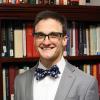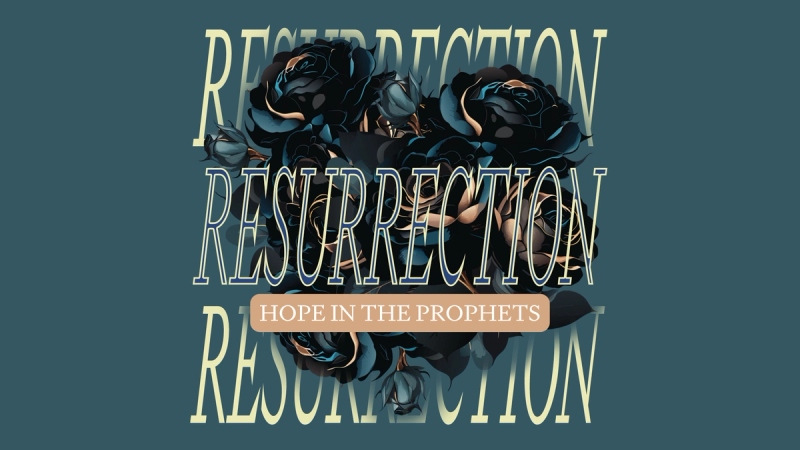“Your dead shall live; their bodies shall rise. / You who dwell in the dust, awake and sing for joy! / For your dew is a dew of light, / and the earth will give birth to the dead” (Isa. 26:19). This series seeks to demonstrate that Old Testament saints (like those in the New Testament) showed a conscious hope of resurrection—a hope that they received from the pages of Scripture. The previous essay showed that, through the Law, the Old Testament saints met the Lord of the resurrection (who gives life to the lifeless, to the living, and even from the dead). This essay will move on to the next section of the Hebrew Bible: the Prophets. Unlike modern English translations, the middle section of the Tanakh contained prophetic words (be they prophetic histories or prophetic predictions). In this section, the Old Testament saints hear of the power of the resurrection, and they respond accordingly.
Hearing the Power of Resurrection in the Prophets
As Scripture moves from the Law to the Prophets, the references to resurrection move from shadowy figures to solid forms. Mitchel Chase says that in the Prophets, “the hope of resurrection becomes stronger and more explicit.” Resurrection references also become more frequent. Only a select few can be covered here. In various ways, Old Testament saints heard of God’s power to resurrect. Sometimes this power was heard in prayers, sometimes through promises. Sometimes this power was even heard in proof offered by the prophets themselves.
Power in Prayer
The Lord visited Hannah’s lifeless womb and gave her a son—a theme repeated frequently in the Law. She returned the child to the Lord, worshiping and praying these words. “The barren has borne seven, / but she who has many children is forlorn” (1 Sam. 2:5b). This is an obvious reference to Hannah and her adversary, and it sets the tone of her prayer as well as the books of Samuel. God will bring the mighty low and the lowly high. But then Hannah prays something even more peculiar. “The Lord kills and brings to life; / he brings down to Sheol and raises up” (1 Sam. 2:6). Commentators such as Matthew Henry understand this to refer to near-death experiences. “He brings even to death’s door, and then revives and raises up.” This is linguistically possible. However, “מוֹרִ֥ידשְׁא֖וֹל” could certainly mean that he brings down into Sheol as well. This is probably the more accurate interpretation. The B-line of “brings down … and raises up” is meant to parallel the A-line of “kills and brings to life.”
G. K. Beale and D. A. Carson make this assertion as well. They appeal to Hannah’s prayer alongside other passages as part of a “significant OT theme [that] resonates in the background of Jesus’ statement in John 5:21 that the Son gives life to whomever he pleases.” This verse clearly shows that “raising the dead and giving life are the sole prerogatives of God.”
Whether or not Hannah explicitly stated God’s power to raise the dead, at least one thing is certain. Old Testament saints heard in her prayer a proclamation of God’s power. He held the power to give life and even to restore life to those who were (at least as good as) dead. Perhaps Hannah meant more by this statement, or perhaps by God’s Spirit she said more than she knew.
Power in Promises
Though Hannah’s comments may have only been an implicit reference to resurrection, people throughout the Prophets made more explicit claims about God’s power to resurrect. The Old Testament saints heard God himself make such promises. At first, these promises only hinted toward resurrection power. The Lord promised David, “When your days are fulfilled and you lie down with your fathers, I will raise up your offspring after you, who shall come from your body … and I will establish the throne of his kingdom forever” (2 Sam. 7:12–13). The Lord hinted at resurrection power by promising a human person (one who came from David’s body) who, in some way, would have power over death so that he could reign forever. Perhaps the Old Testament saints did not hear this prophecy and think, “Oh yes, of course, this must be referring to a resurrection.” But it should not be doubted that they were hearing this text in light of the Law—in light of Genesis 3 and Genesis 22. They were surely looking forward to the seed of the woman who would reverse the curse of death and bruise the head of the serpent. They were surely looking forward to a seed of Abraham who would possess the gates of the final enemy and bless all the nations in him.
Veiled as God’s promise to David may have been, his promises became more explicit as the Old Testament saints worked their way through the Prophets. God’s word through the prophet Hosea is an excellent example. “I shall ransom them from the power of Sheol; / I shall redeem them from Death. / O Death, where are your plagues? / O Sheol, where is your sting? / Compassion is hidden from my eyes” (Hos. 13:14). Here the Lord clearly stated that he had power over Sheol. More than that, he will redeem (or buy back) his people from death itself. Then, the Lord goes so far as to boldly taunt death! How is this prophecy to be understood? Scripture is always the best interpreter of Scripture, and Paul makes the meaning of this passage clear in 1 Corinthians 15. He begins by asking, “Now if Christ is proclaimed as raised from the dead, how can some of you say that there is no resurrection of the dead” (1 Cor. 15:12)? He concludes that the perishable will put on the imperishable, the mortal the immortal, and he quotes Hosea’s death taunt. “O death, where is your victory? / O death, where is your sting?” (1 Cor. 15:55)? There can be no doubt that the power of God to resurrect was resoundingly heard in his promises.
Power in the Prophets
These promises were not cheap talk or empty words. The Old Testament saints heard of God’s resurrection power being proven by the prophets themselves. Perhaps (like in one interpretation of Hannah’s prayer), this proof was sometimes seen in near-death resurrections. Jonah is the prime example. While in the belly of a fish, he prayed, “I called out to the Lord, out of my distress, / and he answered me; / out of the belly of Sheol I cried, / and you heard my voice” (Jon. 2:2). Jonah was only figuratively dead, of course. But the fact that God raised him from the depths became a sign of resurrection. Jesus references this resurrection sign in Luke 11:29, and he indicates that the sign was enough. It was enough, at least, to make the Ninevites repent (Jon. 3:6–10). But Christ adds a contrast to this comparison saying, “And behold, something greater than Jonah is here” (Luke 11:32). Christ is greater because his resurrection is not figurative but actual.
But this is not merely a New Testament reality. Even in the Old Testament, the Lord proved his power to resurrect from actual, physical death. The Lord raised children from death to life through both the prophet Elijah (in 1 Kings 17:17–24) and the prophet Elisha (in 2 Kings 4:18–35). This was not figurative language. These were no metaphorical deaths. These children were dead, and by the power of God, they were made alive! It is interesting that these miracles did not take place in Israel—something that Jesus pointed out (Luke 4:25–26). These miracles were not done for the people of God, nor were they done in their midst. Instead, these events took place in foreign lands for foreign people. This is interesting because they were then recorded in the Prophets for the Old Testament saints to hear … not yet to see. They were to hear and to believe in the power of God to resurrect the dead.
Conclusion
Through the Prophets, Old Testament saints heard of the power of God’s resurrection, and they responded both with how they believed and with how they lived. David heard of God’s promise and sat in his presence with gratitude (2 Sam. 7:18–29). The Ninevites heard of the Lord’s power and turned from their wickedness (Jon. 3:6–10). The widows saw first-hand the power of the Lord and believed in his word (1 Kings 17:24).
New Testament saints hear no less. They hear of the power of God to raise Christ Jesus from the dead, and they hear that one day all the dead in Christ will rise. This should give the New Testament believer a bold and imperishable hope to live as Christ in the world (1 Pet. 1:3–5), knowing that though there are those who can destroy the body (Matt. 10:28), that is only temporary. One day they will rise again and be acknowledged before God the Father (Matt. 10:32). Such violence cannot touch the soul which, for every believer, will live eternally, reigning with Christ Jesus their Lord (Rev. 20:4).
Footnotes
All Scripture citations in this work are taken from The Holy Bible: English Standard Version (Wheaton: Standard Bible Society, 2016) unless otherwise noted.
BackMitchell L. Chase, Resurrection Hope and the Death of Death (Wheaton: Crossway, 2022), 41.
BackMatthew Henrey, Matthew Henrey’s Commentary on the Whole Bible, vol II, Joshua to Esther (Iowa Falls: World Bible Publishers, n.d.), 268.
BackG. K. Beale and D. A. Carson, Commentary on the New Testament use of the Old Testament (Grand Rapids: Baker Academic, 2007), 442.
BackFor an interesting look at how Old Testament saints understood Sheol, read T. Desmond Alexander’s “The Old Testament View of Life After Death” in Volume 11 - Issue 2 of Themelios.
Back




